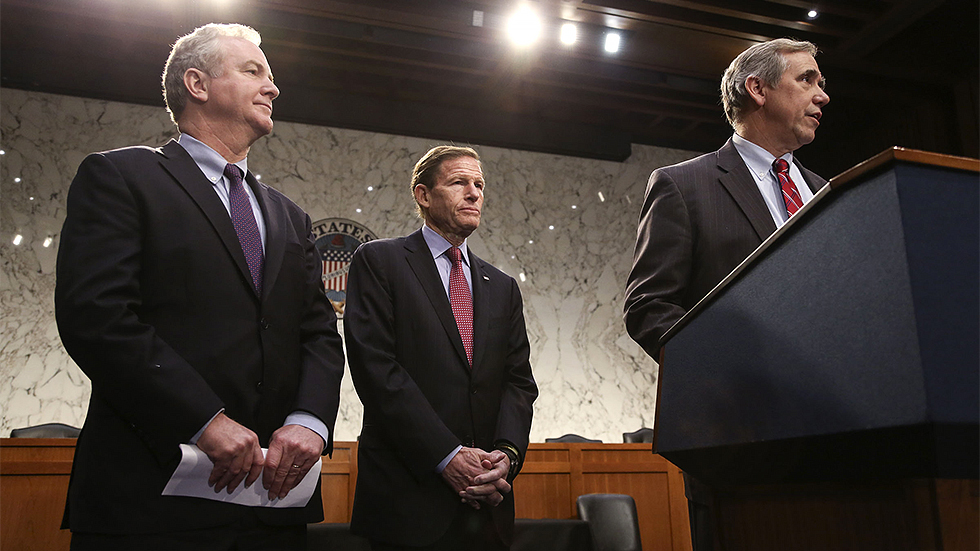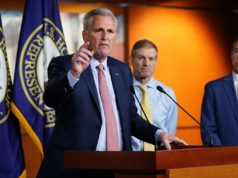
The decision for Senate Republicans to launch the “nuclear option” to ensure confirmation of Judge Neil Gorsuch to the U.S. Supreme Court may be the tipping point in dismantling the much abused filibuster rule that can bring the U.S. Senate to a screeching halt.
The Senate filibuster brings to mind the classic movie, “Mr. Smith Goes to Washington,” where the character played by Jimmy Stewart, Jefferson Smith, heroically takes to the Senate floor to filibuster a crooked land deal, holding the floor by continuous speech. While one of Hollywood’s best scenes, this is not typically how or why a filibuster occurs, and getting rid of the filibuster’s ability to derail Judge Gorsuch strengthens democracy in the U.S. Senate.
ADVERTISEMENT
First, some history. The filibuster developed in a peculiar way. The First Congress did not mention or recognize the ability to filibuster. Senators did have the ability to invoke a “previous question motion,” which simply meant by a majority vote a debate would end on whatever topic was being discussed. Enter Vice President Aaron Burr (of Alexander Hamilton fame), who, as Senate president, decided in 1805 that the Senate rules needed to be streamlined, and persuaded his colleagues to abandon what he considered to be a superfluous rule; namely, that a majority could cut off debate. Abandoning this rule opened the possibility for any Senator to filibuster one measure endlessly.
The first filibuster did not occur until 1837, and it was rarely used again during the 19th century. In 1917, the Senate adopted a rule known as cloture, which allowed a filibuster, or endless debate, to be stopped if two-thirds (64) of the Senate voted to stop debate.
The filibuster would be employed by those seeking to block legislation with notorious filibusters during the 1950s and 1960s. Invoked by men considered “Lions of the Senate,” the real intent of these filibusters was to stop important civil rights legislation. In 1975, the Senate changed the cloture rule to require three-fifths, or 60 senators, to invoke cloture and stop a filibuster. One might call that reform, but it still allows a minority of 41 senators to thwart the will of the majority of the people’s representatives.
Perhaps in the “old” days, when senators had a sense of collegiality, and the filibuster was employed sparingly, this procedural device could remain in place. However, the filibuster’s use has increased geometrically in the past few decades and it has hastened the fierce partisan divide that harms our democratic process.
Consider: During the 1950s, a congressional session typically had one filibuster on average per session. By the mid-1980s, there were almost 17 per session, and the number increased to 52 in the 1990s. In 2010, a Senate bill to provide medical care to 9/11 responders had majority support, yet could not achieve the supermajority of 60 votes to stop those who filibustered the measure.
Now, with increasing political polarization and decreasing comity among senators, filibusters will continue to increase, allowing a minority of senators to shut down the “Upper House.” Perhaps some of this has to do with the 24-hour news cycle where senators take to tv and cable news shows and attack each other round-the-clock, rather than sit down after hours and negotiate to find common ground, as should be the case in the greatest deliberative body in the world. Or, perhaps it has to do with our political parties skewing far to the extreme right and left, with moderate discourse and compromise a fond memory.
Our framers never intended for the majority will to be stymied by use of the filibuster. Several legal scholars contend that the filibuster is unconstitutional, as the framers, such as James Madison, opposed a governmental structure where a vocal minority could interfere with majority rule. The 17th Amendment recognized this by changing the way U.S. senators were selected from the clubhouse politics of state legislators to a vote of the majority of the state’s electorate.
Fast forward to the Gorsuch nomination. Even before the hearings on his nomination were complete, Democratic senators vowed to use the filibuster to stop his confirmation. This action would ensure that a qualified jurist could be held hostage to an angry minority faction still seething over their November drubbing. This can’t be what the framers intended or what the public wants. In response to the filibuster threat, and after not being able to marshal a supermajority to end the filibuster, the Republican leader invoked the so-called “nuclear option,”(a phrase which I detest) whereby Judge Gorsuch could be confirmed by a majority. In this sense, the nuclear option (ironically evoking images of political destruction) actually promoted the real democratic principle of majority rule.
The bottom line is no one should weep for the destruction of the filibuster. Even the name, coming from the Spanish word “filibuster,” referring to pirates and robbers, should make us pause and consider its appropriateness. When the people send their representatives to Congress, a majority of that Congress should be empowered to undertake the agenda for which they were elected. The filibuster has turned the most deliberative body into the most obstructionist one. It is about time it was deep sixed, for Mr. Smith left Washington a long time ago.
Peter Kalikow is the President of H. J. Kalikow & Company, LLC, one of New York City’s leading real estate firms. He is the former Chairman of the Metropolitan Transportation Authority (MTA), former Commissioner of the Port Authority of New York and New Jersey, past owner and publisher of the New York Post and established the Peter S. Kalikow School of Government, Public Policy and International Affairs at Hofstra University on Long Island.
The views expressed by this author are their own and are not the views of The Hill.







